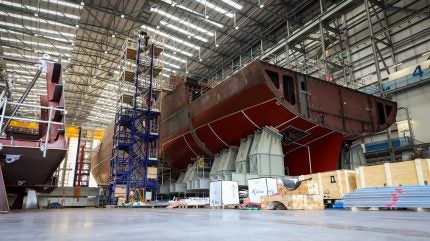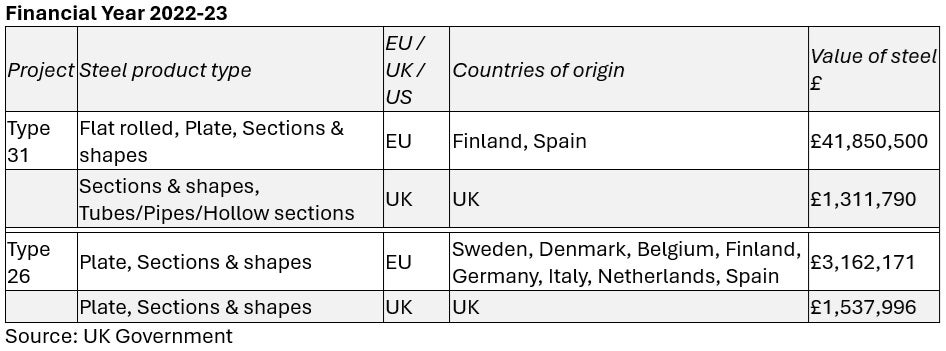
The overwhelming majority of steel required for the manufacture of the Royal Navy’s future Type 31 and Type 26 frigates during the 2022/23 financial year was sourced from European Union (EU) member states, rather than the UK, according to official figures.
In a parliamentary written answer on 19 March, UK Defence Procurement Minister Maria Eagle revealed that steel products to a value of £41.85m ($54.5m) was acquired from Finland and Spain during FY 2022/23 for the Type 31 frigates, compared to £1.3m in shaped steel sections, tubes, pipes, and hollow structures from UK-sourced steel.
In the same financial year, steel required for the build of the Type 26 frigates was predominantly sourced from the EU, worth at £3.6m, compared to a UK supplied steel value of £1.5m.
The steel for the Type 26 programme was sourced from a wider range of EU countries, including Sweden, Denmark, Belgium, Finland, Germany, Italy, Netherlands, and Spain.

Previous financial years do not disclose the country-of-origin of steel acquired for the build of the Type 31 and Type 26 frigates. However, the FY2021/22 figures show £43.6m worth of steel was obtained for the Type 31 frigates in that financial year, a figure close to the £43.1m combined EU/UK steel from FY2022/23.
For FY202/21, just £391,949 of steel was acquired for the Type 31 programme, unsurprising as the keel for the first in class HMS Venturer was only laid in 2022. This compared with just over £3.7m of steel for the Type 26 build in the same financial year.
During FY2019/20, no steel was acquired as part of the Type 31 programme, with the contract to Babcock only signed in November 2019. Steel obtained for the Type 26 class during this period was valued at £3.4m, similar to the following year.
UK shipbuilding: steel in demand?
While the contracts were awarded during the watch of the previous Conservative government, the new Labour government, which came to power in the UK in July 2024, has made significant play of the need to use defence programmes to bolster UK industry.
Part of this will be organised through the upcoming Defence Industrial Strategy, while as recently as 26 March, Chancellor Rachel Reeves spoke in parliament on making defence investment central to the government’s national growth agenda.
Earlier, in a written parliamentary response on 9 December 2024, Eagle stated that the UK steel industry was an “importance strategic national asset”, describing it was “vital” for the country’s economy.
“We are bringing forward a Defence Industrial Strategy that will align our national security and economic priorities and maintaining a resilient Steel supply chain.
“The Government will also be bringing forward a new cross government strategy for the steel sector, which will be published in Spring 2025,” Eagle said.
The UK’s dwindling heavy manufacturing and steel making capacity is set to reduce further with the planned closure of British Steel sites at Scunthorpe, with the loss of thousands of jobs. British Steel is owned by China’s Jingye, which is seeking a huge bailout from the UK government.
The possible development of electric arc furnaces would go some way to recovering the lost capability, but the arc process can only recycle used steel, with subsequent steel unable to be refined to the standard necessarily for high-end military use, such as submarine manufacture.
Further pressures have been put on the UK’s battered steel sector through tariffs imposed on the global market by US President Donald Trump.




